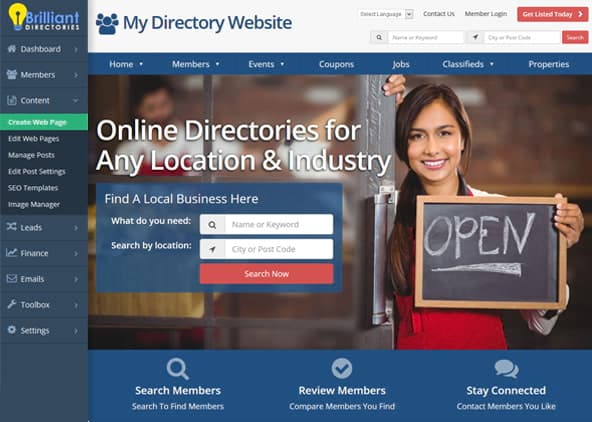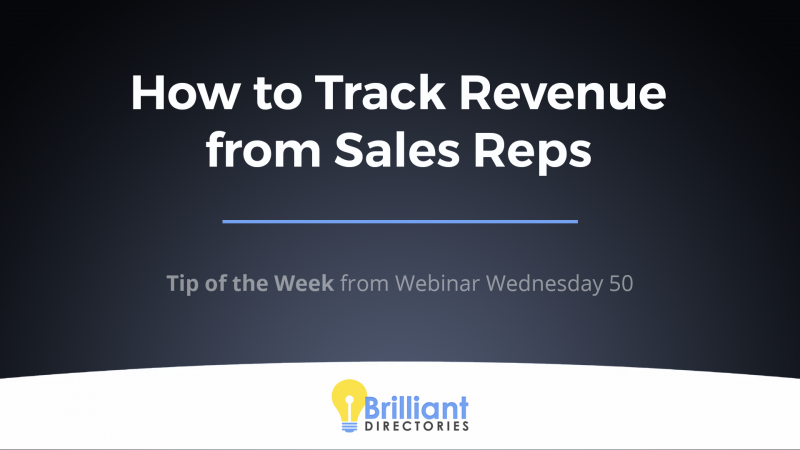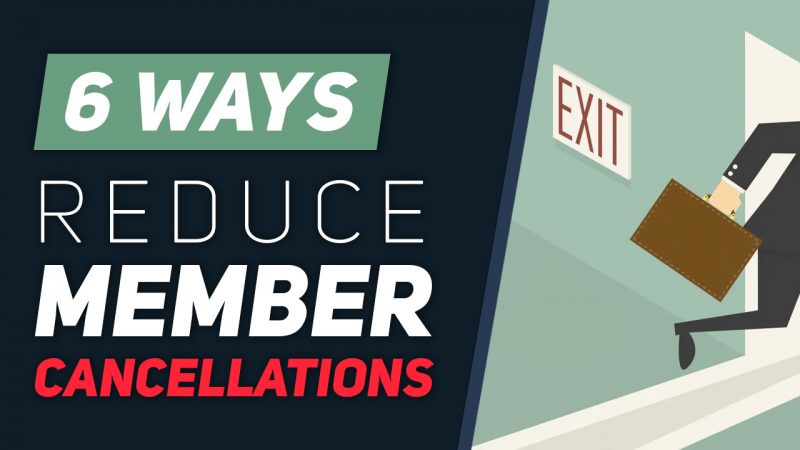![[DEEP DIVE] 3 Formulas to Generate $5,000 in Membership Fees](https://www.brilliantdirectories.com/wp-content/uploads/2019/05/how-much-to-charge-premium-membership-website-members.jpg?hero-image)
This Tip of the Week covers topics including:
- 1:39 – 5 Main Reasons Members Pay Dues & Fees
- 4:01 – Setting Up Your Revenue Goals
- 7:15 – 3 Proven Pricing Formulas
- 17:21 – 3 Ways to Generate $5,000
- 28:56 – User Example: Higher Priced Product/Service
- 34:40 – User Example: Lower Priced Product/Service
This is a segment from Webinar Wednesday 52, recorded live on November 14, 2018.

 AI-Generated Transcript – Please excuse any inaccuracies
AI-Generated Transcript – Please excuse any inaccuracies
Generating Revenue with Membership Dues and Fees
- To generate $5,000 in revenue with membership dues and fees, it’s essential to set a revenue goal and reverse-engineer a marketing plan based on that goal, considering variables such as the value provided to members and the pricing strategy (00:00:11).
- Members pay dues and fees to be part of an organization for various reasons, including access to information, exposure and visibility, prestige and credibility, networking opportunities, and emotional connection to the organization’s cause or mission (00:01:57).
- The top five reasons why members would pay dues and fees include accessing premium content or specialized newsletters, gaining exposure and visibility, achieving prestige and credibility, networking opportunities, and supporting a cause or mission (00:02:13).
- To create a successful membership-based organization, it’s crucial to provide members with benefits that align with their needs and expectations, such as access to exclusive information, advertising opportunities, or emotional connections to the organization’s cause (00:03:11).
Setting Revenue Goals and Pricing Strategies
- Setting up a revenue goal involves considering the number of members, membership fees, and other factors to determine the best approach for achieving the desired revenue, which will be explored through three proven formulas (00:04:07).
- The three proven formulas to generate $5,000 in revenue will cover different scenarios that Entrepreneurship may find themselves in, depending on their personal situation and the type of organization they have, such as a website, print directory, or existing organization with members (00:01:23).
- To create a revenue goal, such as making $5,000 in membership fees, it is necessary to determine how much time and money to invest, as well as the value to be provided to customers, and consider the industry standard for pricing, (00:04:15).
- The amount of money to be invested and the available time are crucial factors in setting revenue goals, and bootstrapping a business with a small budget will require more sweat equity, or time and effort, (00:04:37).
- The value of available time depends on experience, with more experienced marketers able to achieve higher results with less time and money, and beginners requiring more time and effort to learn and manage a business, (00:06:00).
- Assessing demand in the market for a product or service, including the level of competition and customer needs, is essential in creating revenue goals and determining pricing, (00:06:31).
- To achieve revenue goals, it is necessary to have a realistic conversation with oneself, considering factors such as available time, investment, and demand, and using a proven formula to adapt to individual situations, (00:07:01).
- Three proven pricing formulas will be presented, which can be adapted to different scenarios, and individuals can determine which formula works best for them based on their available time, revenue goals, and other factors, (00:07:23).
Pricing Approaches and Their Implications
- There are different pricing formulas that can be applied to collect membership dues and fees, and the approach can vary from being higher priced, moderately priced, or lower priced, with each having its own set of expectations and challenges (00:08:10).
- A higher priced approach can position a business as the “Rolls-Royce Holdings” of the industry, with higher expectations from members, but it may result in fewer potential members, and the value provided must be greater to justify the cost (00:08:21).
- A moderately priced approach can make it difficult to differentiate a business from competitors, as the pricing and features may be similar, so it’s essential to answer the question of why customers should choose this option over others (00:08:51).
- A lower priced approach may seem like a good option, but it can require more work and experience, as it may involve undercutting the competition, and it’s crucial to have optimization and automation in place to manage a larger number of members (00:08:59).
- The choice of pricing approach depends on factors such as experience, the level of support provided, and the sales process, and a lower price can sometimes be perceived as cheap, which may turn people away (00:09:51).
- A person who might choose the higher priced product route is likely someone with a smaller marketing budget, a smaller development budget, and more time to invest in their product, as they will be heavily involved in the onboarding and selling process (00:10:16).
- A higher priced product requires delivering results, building relationships, and working closely with customers to meet their higher expectations, and it’s essential to consider whether the business can afford to provide the necessary support to its customers (00:11:24).
Community Support-Driven Pricing and High-End Product Experience
- A moderate price approach may involve community support-driven pricing, which means that the pricing isn’t high enough to provide one-on-one support to each customer, but it’s still possible to provide an excellent support experience and onboarding experience (00:11:34).
- To deliver a high-end product experience, community routes such as webinars, Facebook groups, or LinkedIn and Slack (software) communities can be used, along with support channels, to provide a hands-on experience that requires conscious support of the community in some capacity (00:12:19).
Lower Pricing Models and Their Challenges
- With lower pricing models, the experience is key, and it is essential to have a seamless sign-up process, a good education and automation system, and a significant marketing budget to drive traffic to the site, as hundreds or thousands of people need to sign up to hit revenue goals (00:13:03).
- A lower price point requires more experience to ensure that the marketing is effective in convincing people to sign up without needing to talk to them personally, and the website needs to sell itself, as it is not feasible to talk to people all day for $5 sign-ups (00:14:57).
- Choosing the wrong pricing model, such as offering a low price but getting personally involved in sales, can have a significant impact, as it can be hard to recoup the investment, especially with limited time, and it may be challenging to make back the investment with low prices (00:15:58).
- Investing time in talking to every potential sign-up can be beneficial for getting feedback, but it can be challenging to recoup the investment, especially if the prices are low, and it may not be possible to make back the investment (00:16:09).
Personalized Marketing and Higher Charges
- Investing time and being hands-on in marketing creates a personalized feel for members, allowing for higher charges, almost like a concierge service, where product demos can be provided to show what members will receive (00:16:24).
Three Revenue Models and Their Characteristics
- To reach a revenue goal of $5,000, there are various ways, and three simple methods have been created, involving reverse engineering membership dues and fees, with the first model being 500 members paying $10, which seems appealing but requires a website that can sell itself (00:17:11).
- The first model requires a large number of website visitors, with a 10% conversion rate, meaning 5,000 visitors are needed to get 500 members, and the website must be able to sell itself without human intervention, with limited support provided to members (00:18:15).
- The second model is the moderate option, where 50 members pay $100, which has pros such as needing to make fewer sales, making it an easier goal to achieve, and requiring less marketing budget (00:19:46).
- This moderate option has advantages, including the need for fewer sales and a lower marketing budget, but it also requires a more personalized approach and potentially more support for members, which can be a challenge (00:20:07).
- To charge higher membership fees, it is necessary to significantly increase the value offered to members, build a strong community, and make them feel like they are part of a credible network, which is well worth the investment they are making (00:20:17).
- The higher-priced model may warrant a 15-minute phone call or consultation to see if potential members are a good fit for the organization, and it is more community-driven, requiring effort to maintain credibility and authority (00:21:09).
- This model can cut workload down by about 90%, but it requires a lot of effort to create a demand for people to want to join, and it may be the right direction for people who do not have a lot of expertise to bring to the table (00:21:28).
High-Priced Model and Its Implementation
- The pricing structure can vary based on the industry, and using $5,000 as an example, the higher-priced model is looking to get a select few members to sign up, providing hands-on support and value to warrant their investment (00:22:25).
- This model requires a system to find and identify candidates, and it involves creating a relationship with potential members, courting them, and potentially doing product demos, which can be more time-consuming but has a bigger payoff per member (00:23:09).
- Examples of this model can be seen in different industries, such as a national directory for dentists, where the goal is to find a select few members and offer them something unique and valuable that they cannot find anywhere else (00:23:51).
- A directory website can generate significant revenue by partnering with a limited number of high-quality businesses, such as dentists, and offering them a premium service with guaranteed leads, hands-on support, and optimized profiles, which can be a more effective approach than trying to sign up a large number of businesses at a lower price point (00:24:17).
- By offering a high-value service with a personal account manager, dedicated Google Ads campaign, and optimized profiles, a directory website can differentiate itself from competitors and charge a premium price, creating a “cash cow” business with low overhead expenses and high customer satisfaction (00:24:20).
- The goal is to provide high value to customers while using fewer resources, and getting hands-on with customers can be an effective way to provide premium service and justify higher prices, with the ultimate goal of creating a business that can generate significant revenue with minimal overhead (00:24:31).
Polling the Audience on Pricing Models
- A poll was launched to ask which pricing model is most appealing, with options including a high-price model with fewer members, a low-priced model with more members, or a moderate-priced model based on industry standards, and the results can help inform the development of a directory website’s pricing structure (00:26:54).
- The key to success is to create a product or service that adds significant value to customers and can be delivered with minimal resources, allowing for a premium price to be charged and creating a sustainable and profitable business model (00:25:54).
- By optimizing the service to provide high value with low overhead, a directory website can create a “cash cow” business that generates significant revenue with minimal effort, and this can be achieved by focusing on a limited number of high-quality partnerships and delivering exceptional service and results (00:26:00).
- The poll results can provide insight into which pricing model is most appealing to customers and can help inform the development of a directory website’s pricing strategy, with the goal of creating a business that can generate significant revenue and provide high value to customers (00:27:10).
- The audience was polled to determine their comfort level with different pricing models, with 67% selecting the moderate price and a split decision between the high and low price models (00:28:13).
Discussion with Audience Members on High-Price Model
- A discussion was held with audience members who selected the high price model, including Wendy, who shared her experience with offering high-priced services, including education on technologies such as proximity-based marketing and SMS marketing (00:28:50).
- Wendy’s directory offers a range of services, including installing technologies in businesses and providing video marketing, which allows her to charge a premium price for her services (00:30:33).
- To charge a premium price, it is essential to have a product that is needed, such as unique technologies or services that go beyond just a website, and to create a level of exclusivity to generate demand (00:30:53).
- Wendy’s organization creates exclusivity by not offering free membership to everyone, and instead, offers exclusive services to its members, which are often acquired through personal connections and community involvement (00:31:58).
- The president of Wendy’s directory has been a member of the community and has worked with businesses, attending events and building relationships, which has helped to acquire members for the directory (00:32:20).
- The key to charging a premium price is to offer unique and valuable services that meet the needs of the target audience, and to create a sense of exclusivity and demand for those services (00:30:58).
- The system in place has a great sales pitch and demo, delivers results, and provides hands-on support, which justifies charging a premium to members, and this model can work with the right approach (00:33:00).
- Creating assets that demonstrate expertise and best practices, such as writing articles on marketing and technologies, can encourage confidence in prospective members and showcase an organization’s capabilities (00:33:21).
- An Advisory Committee is being instituted, consisting of business members who will help determine the direction of the directory, which is a great way to get feedback and guidance from members (00:33:42).
- Wendy’s organization follows a model that requires a system to find high-paying candidates, a sales pitch and demo, delivery of results, and hands-on support, which is a good example of how this model can work (00:34:06).
Alternative Approach: Guerrilla Marketing and High Volume
- Barry, from the UK, is taking a different approach by targeting the photography industry, where he has 40 years of experience, and plans to use a manual fee and guerrilla marketing to reach a high volume of potential members (00:34:45).
- Barry’s strategy involves emailing his list of 40,000 photographers in the US and 10,000 in the UK to encourage them to sign up as free members and then upgrade to an annual paid membership (00:35:44).
- The discussion highlights that there are multiple ways to achieve revenue goals, and the approach taken depends on experience, time, and investment, with Barry’s guerrilla marketing route and Wendy’s hands-on approach being two ends of the spectrum (00:36:41).
- The key takeaway is that understanding the industry and the needs of potential members is crucial, and experience in both marketing and the industry being served is essential for success (00:35:20).
Key Takeaways and Implementing the Right Formula
- To successfully execute a business model, it is essential to identify the missing pieces, such as a community or an onboarding setup, which are crucial for effective execution (00:37:11).
- The model of making a limited number of high-value sales, for instance, five sales, can be easier to achieve than making a large number of low-value sales, such as 500 sales, depending on individual circumstances (00:37:26).
- Certain elements, such as having a Facebook group or an onboarding process, can make a particular formula work for some people, and it is hoped that individuals can discover which formula works best for them and implement it on their sites (00:37:39).






![[INSIDER TIPS] 6 Truths Every Membership Site Owner Needs To Know [INSIDER TIPS] 6 Truths Every Membership Site Owner Needs To Know](https://www.brilliantdirectories.com/wp-content/uploads/2019/06/tips-for-new-membership-directory-website-owner-800x450.jpg)







